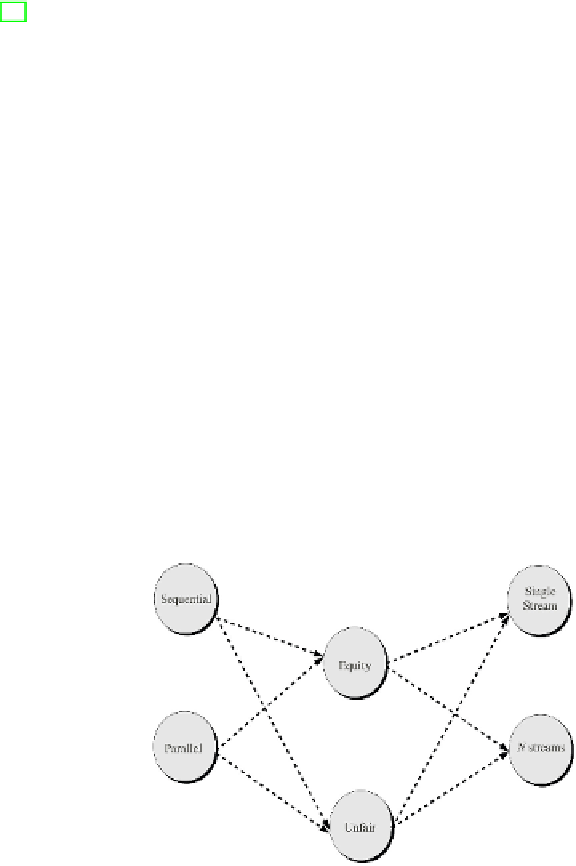Information Technology Reference
In-Depth Information
For various reasons, financial institutions need to proceed again an historical record
of orders (for example, for the optimization of algorithmic trading methods). Such his-
torical records collect the expression of human behaviours in specific circumstances.
The first difficulty of order-flow replaying is exact interpretation of the order flow as it
is expressed in the real-world. If order set consists of only
”Limit Orders”
, it could be
perfectly reproducible. Unfortunately, issued orders can be modified or deleted. It im-
plies one must be able to identify clearly reference between an ”Update” or a ”Delete”
and previously issued orders. Thus, a generic platform has to use a unique ID for orders.
To our knowledge, this is neither the case for the Genoa Artificial Stock Market (see
[14]) nor in the Santa-Fe ASM for example (see [15]). How should an ASM deal with
this issue?
In ATOM, each order is sent by an agent. Each agent has a unique name. The Id
is then constituted by the agent's name, owner of this order,
plus
a unique number
managed by the agent itself. It is the responsibility of the agent to be able to retrieve
its own orders. If she does not do that, she will not be able to send a Cancel or an
Update order. Two other solutions exist : the first option could use the system time-
stamp, however, with classical systems and languages, it is perfectly possible to process
several orders during the same tick time; the second option could consist in making the
market managing these ID's, but this would imply to use a corresponding table between
external and internal Ids. This latter complication is useless.
3.3
Time Handling and Scheduling System
A crucial question for distributed system design is the way one deals with time. There
are two aspects for this problem: the modelling choice (sequential/parallel evaluation
of agents) and the architecture choice (single stream or multiple streams processes). In
ATOM the scheduling system is parametric, thus one can choose between four possible
configurations (see figure 3). In each case, one can also decide if the talking possibilities
for agents will be balanced among them or not. These possibilities give the designer a
real power for answering a wide range of problems and experiments.
Fig. 3.
Modelling and architecture choices in time handling problem


